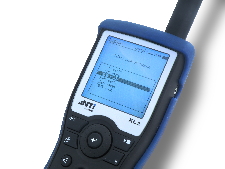To affect the latter, the AES has a new technical committee forming around audio reproduction for Digital Cinema. Television is also stuck onto the title, though either outlet is a large enough mandate.
The challenge of audio in the modern cinema comes from many angles. One is keeping it sane safe and listenable during and before movies. On the other hand, there is a different experience potential and expectation for sports and live performance. Since they are part of the magic of alternative content – the miracle that is supposed to compensate for the additional 4X digital costs over film equipment – handling customer increased audio expectations will need to be addressed.
Editorially, we’ll let this article – and press release from the AES – begin a series of AudioRants that will bring out the issues, problems and potential solutions. As vice-chair of the committee Dr. Toole has said, “It’s not rocket science, but it is science.”
Formative AES Technical Committee on Sound for Digital Cinema & TV
New York, NY — The Audio Engineering Society has formed a provisional committee to review audio reproduction for Digital Cinema and Television. Spearheaded by Brian McCarty, Managing Director, Coral Sea Studios (Australia), the new AES Technical Committee on Sound for Digital Cinema & Television, AESTC-SDCTV is planning a meeting in Los Angeles in early 2012. To participate in this event or to join the AESTC-SDCTV Committee contact: Brian McCarty (http://www.aes.org/technical/sdctv/).
“Our mission is to identify a consistent approach to controlling perceived loudness and frequency response from installation to installation, and from position to position within Digital Cinema installations worldwide,” McCarty said. “And, for this to be adopted as the formal reference for all contemporary dubbing stage recording and mixing activities, and ultimately as the unified method for film reproduction at home.”
Originally addressed at AES Technical Committee meetings in London in 2010, the initiative was inspired by the AES historical involvement in film sound. The lack of electroacoustical response reference data for Digital Cinema systems was underscored by Dr. Floyd Toole’s statement, “It seems that no real science has been done in terms of Digital Cinema Sound.” Dr. Toole, Vice Chair of the committee, is developing a ½ day seminar on these issues to be held in L.A. in March that will serve as the first meeting of the committee.
McCarty underscores the point that global acousticians, engineers and systems installers have expressed the need for a working standard. “In simple terms, what is recorded digitally in the studio does NOT sound the same at the theatrical end,” McCarty says. “As an art form our goal should be consistency of sound quality. Acoustical design of theaters is typically incorrect for sound reproduction in large rooms. Current soundtrack EQ reproduction curves are inconsistent with large-room audio practice and, with the rest of the audio industry. And, loudspeaker technology typically used in theaters has yet to be optimized for proper playback of wide bandwidth soundtracks. Basically,” McCarty concludes, “the current Digital Cinema Audio System is simply not the best we can do. The AES is committed to improving this situation.”
About AES
The Audio Engineering Society was formed in 1948 by a group of concerned audio engineers. The AES counts over 14,000 members throughout the U.S., Latin America, Europe, Japan and the Far East. The organization serves as the pivotal force in the exchange and dissemination of technical information for the industry.
www.aes.org
 Get the big picture here and here.
Get the big picture here and here.